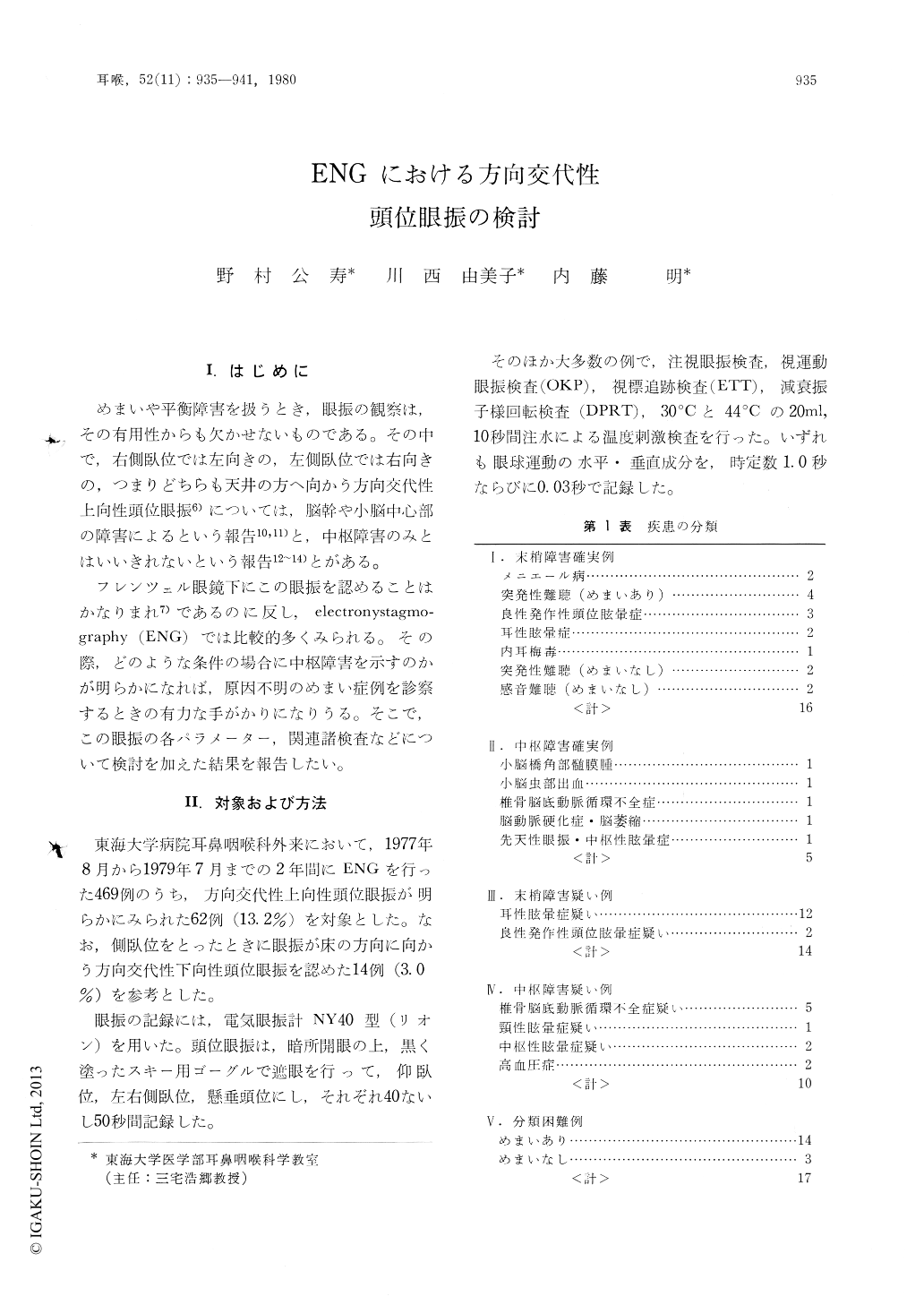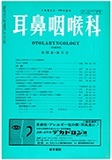Japanese
English
- 有料閲覧
- Abstract 文献概要
- 1ページ目 Look Inside
I.はじめに
めまいや平衡障害を扱うとき,眼振の観察は,その有用性からも欠かせないものである。その中で,右側臥位では左向きの,左側臥位では右向きの,つまりどちらも天井の方へ向かう方向交代性上向性頭位眼振6)については,脳幹や小脳中心部の障害によるという報告10,11)と,中枢障害のみとはいいきれないという報告12〜14)とがある。
フレンツェル眼鏡下にこの眼振を認めることはかなりまれ7)であるのに反し,electronystagmography(ENG)では比較的多くみられる。その際,どのような条件の場合に中枢障害を示すのかが明らかになれば,原因不明のめまい症例を診察するときの有力な手がかりになりうる。そこで,この眼振の各パラメーター,関連諸検査などについて検討を加えた結果を報告したい。
Positional nystagmus which beats to the right in the left lateral position and to the left in the right lateral postion was noticed in 62 (13.2%) out of 469 patients with open eyes in dark examined by electronystagmography.
Amplitude, frequency, slow phase velosity and duration of this nystagmus were not useful to differentiate central vestibular disorders from peripheral ones.
When this nystagmus was detected under Frenzel glasses, disturbance of the brainstem or cerebellum is mostly suspected. Moderate abnormality of the results of eye tracking test and optokinetic pattern test coexisting with this nystagmus suggest central vestibular disorder. Damped pendular rotation test is available to detect the vascular disturbance as a background of diseases and this nystagmus.

Copyright © 1980, Igaku-Shoin Ltd. All rights reserved.


